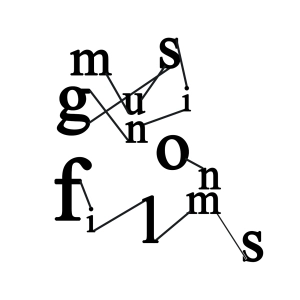
After five years spent establishing their style on Monty Python’s Flying Circus, Holy Grail represents their first real shift to the big screen (discounting 1971’s And Now for Something Completely Different, which reworked material from the show.) Despite the shift to a feature length narrative, it retains the feeling of a sketch comedy variety show. Whilst the quest for the grail gives the sense of an overarching purpose, we still move between numerous situations and different characters who rarely reappear (if only briefly), that seem to last no more than five minutes each, from gatekeeping knights to evil bunnies.
Holy Grail manages to satirise just about everything, from Ingmar Bergman films, to trade unions and communism, to notions around witchcraft and God, musicals, and far too much to ever cover in one review. Its humour is deliberately anachronistic, transposing the Medieval events of the film against the contemporary 1970s.
We remain aware that the film is constructed. The narrator calls out scene transitions; Patsy notes how the castle is only a model; the chase with the dragon ends when the animator has a sudden heart attack. The editing is anarchic, as we cut back to characters from earlier scenes who break the fourth wall. . When the film ends, the policeman tells a cameraman to turn the camera off, as the reel reaches its end.
But the film also confronts how we perceive of history. It presents us with a different sense of morality, where death is a mere token: killing an elderly man only to make the job of the man who wheels off corpses easier is acceptable. So is throwing your son out of a castle window, or murdering a party of wedding guests. It isn’t wrong, but only a momentary pause to proceedings.
When the film cuts to a historian describing the events of King Arthur’s time, only to have his head cut off, it is making a statement. The historian’s view of history is not necessarily the right answer. This film becomes the definitive history of its time, whilst also decrying the need to be faithful to established history at all. Why there are coconuts or shrubberies in Medieval England does not need a satisfying answer.
But it also subverts our popular perceptions around history. King Arthur is an allegorical figure, enshrined within mythology yet with real doubts to his authenticity. Rather than accepting him, the characters within the film continually question his authority. But the film also subverts the idea of the knight in the shining armour. When 150 women (a bunch of 16-19 year olds) try to pressure Sir Galahad into fucking them, they become seductresses of temptation, yet he spends the entire time very reluctant. They are not celibate, or sexless, or convents of purity and virginity. Neither is it the damsel in distress who needs to be rescued: it is the prince.
Though Monty Python continued to be an established name at the box office with Life of Brian (1979) and The Meaning of Life (1983), Holy Grail remains perhaps their greatest achievement.


You must be logged in to post a comment.